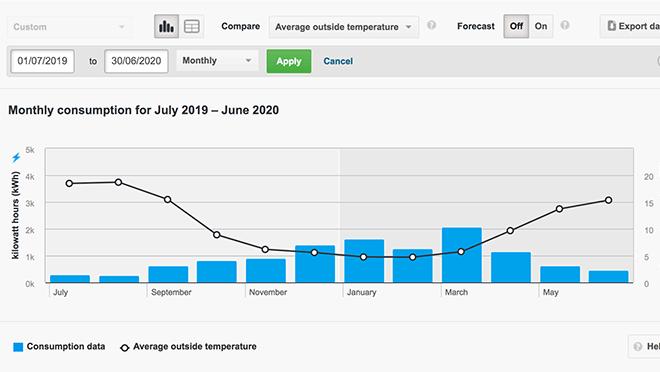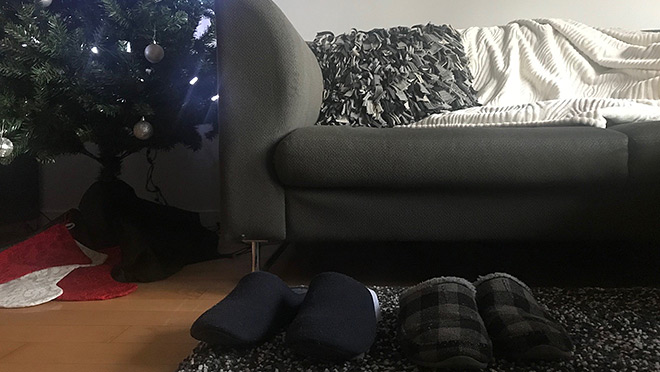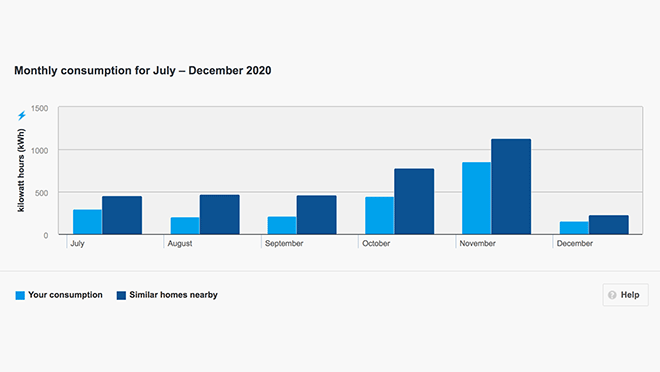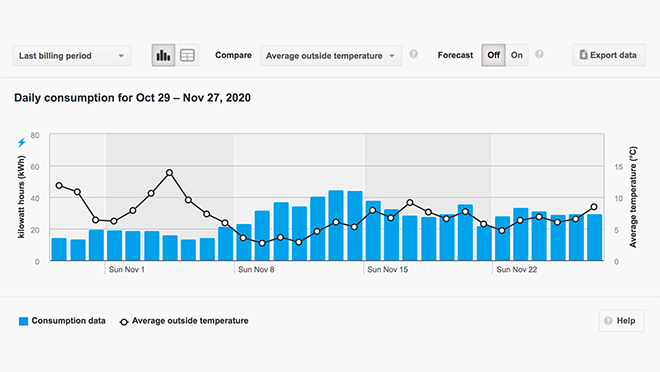Tale of a townhouse: comfort minus the high bills

How to strike a balance between comfort and baseboard heating costs
Rob Klovance
For bchydro.com
For most homes heated by electric baseboards, winter bills can be up to two or three times higher than they are in the summer. And then there's our three-storey townhome, where our bill last March was 10 times what it was in August.
You read that right: 10 times higher.
The thing is, it wasn't technically our bill. It was the electricity use run up by tenants staying at our place who – in the early days of the pandemic – seemed to be trying to recreate a hot weather vacation in Cancun. Thankfully, we're back in B.C., and back in our home. And armed with new MYSA wifi-enabled thermostats, we're finding a way to stay comfy with two adults and a teenager all working and studying from home.
Spending much more time than usual at home will prevent us from returning to our record electricity use lows of a few years ago, when we earned a $50 Team Power Smart 10% Challenge reward for cutting our energy use by at least 10% over 12 months. But we're on track for another reward cheque, at 20% savings so far, seven months into a new challenge.
A 20% reduction over the previous year would also save us more than $250 on our energy bills for those 12 months.
Interested in starting a 10% Challenge? Join Team Power Smart if you haven't already (it's free) and add your account online to access your Member Tool Box to start a Challenge.
Here are a few things we're doing to stay comfy while limiting our winter bills and pursuing another $50 reward cheque.
Start by draftproofing windows and doors
We check the weatherstripping, including the door sweep, on our entry doors each year. And this year, we replaced the weatherstripping on a few windows as well, which helped reduce a couple uncomfortable and costly drafts.
Draftproofing is one of the simplest and most inexpensive ways to add comfort to your home while giving your heating system (and your bank account) a break. Check out how easy it is on our draftproofing DIY page, where Dave shows how to seal windows and also those oft-forgotten electrical outlets that can bring cold air in through exterior walls.
And if you qualify, or know someone who might, you can register for a free energy saving kit that includes draftproofing supplies along with the likes of LED bulbs, water-saving showerheads and aerators.

Pay attention to the heat of the matter
For our home, it's all about heat. We have eight electric baseboard heaters scattered around three floors of our 1,300-square-foot home. Despite electric baseboards being 100% efficient in how they produce heat, it takes a strategy to use them efficiently and keep the chill out of a home that has wood and tile floors, through the fall and winter. The key is to only raise the heat in the rooms you're using, and to lower the temperature in all rooms overnight.
Our former tenants got instructions on how to do that, but evidently ignored it, leaving high heat on all the time. As we've spent a lot of time working online – sometimes on concurrent Zoom calls – in three different rooms, we've recognized that our bills won't be low this winter. But a few behavioural changes and setting schedules with those MYSA programmable thermostats has worked well to keep our bills modest.
Here's what has worked for us:
- Lowering room temperatures to 17°C or 18°C overnight, then scheduling the ones in rooms we're in to 20°C during the day and evening.
- Manually lowering the thermostat in a room when we've just had a workout or are doing something active, like cleaning up.
- Wearing sweaters or hoodies, and slippers.
- Adding a cozy area rug to cover the wooden floor in our living room.
- Grabbing a blanket when huddled on the couch for the latest streaming binge.
- Opening our blinds to let the sun spill in on those nicer days, and closing them, in particular, in the evening and overnight.
- Getting outside for a walk, run, or bike ride as much as possible. We feel energized after a workout, and it's amazing how much warmer our home feels after the body is warmed up (and just how long that feeling lasts).
Other actions that help lower our bills
Until the most recent COVID-19 lockdown measures came into effect, I was fortunate enough to play hockey twice a week while my son did soccer training three times a week. And that meant plenty of laundry.
A few years back, we installed an ENERGY STAR® rated ventless clothes dryer, and while we've had to show more patience with drying time, we learned to love the appliance. It's easier on clothes (less wear and shrinkage), and we usually use it only to damp-dry clothes before hanging them on our two indoor drying racks. It's a good idea, by the way, to run a bathroom fan nearby when hanging damp clothes to help prevent condensation on nearby windows.
With so much time at home, it's been a steady stream of eating and drinking in the home. And that has meant our dishwasher has filled up more quickly than usual. We've slowed that a bit by reusing glasses and cups – actually assigning different glass/cup designs for each of us so as not to get confused – as much as possible. And the eco cycle of the dishwasher, minus the heat-dry option, has done a fantastic job of cleaning our dishes.
We also feel good about leaning on local takeout and/or food delivery to add variety to our meal list and support struggling local eateries at a tough time.

MyHydro keeps us on track
We're not just checking online for our Team Power Smart 10% Challenge status. We're also checking MyHydro regularly to see how our electricity use is changing over the course of a week.
Through the fall, and even through that chilly early November, we managed to keep our usage modest. And the "similar homes" comparison tool (see the image above) shows that our usage has compared favourably most days. But there's no escaping it: When the temperature plummets, heating our room causes spikes in usage (below image). We've just managed to minimize those spikes, at least a little.
